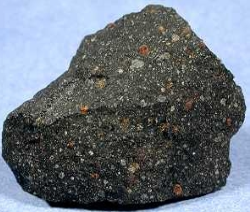Lecture 5 - Comets and asteroids
1/37
There's no tags or description
Looks like no tags are added yet.
Name | Mastery | Learn | Test | Matching | Spaced |
|---|
No study sessions yet.
38 Terms
what is a comet
object composed mostly of ice and dust that
comes from the outer Solar system towards the Sun,
creating a tailcreating a tail
what is an asteroid
small rocky body in solar system
what is a metworid
small particle from an asteroid or comet orbiting the sun
what is a meteor
a meteorid that is observed as it burns up in earth’s atmosphere
what is a meteroite
a meteroid that survives its passage through earth’s atmosphere and impacts the surface
what is the oort cloud
a spherical shell around the sun at a distance of 50000 AU extending to 1 light year
what is the kuiper belt
a ring of icy objects beyond the orbit of neptune
what is the typical sise of comts
they are small ranging from a few miles to tens of miles wide in their frozen states
how to comets travel through space
they remain in the oort cloud/kuiper belt until a gravitational pertubation by a nearby star causes some of them to change their orbits suffieciently that they pass through the solar system
what happens once a comet breaks free from the orrt cloud
they either have an eliptical orbit or a hyperbolic orbit
what is an elliptical comet orbit around the sun
the tail increases with dereasing distance to the sun
points away from the sun
two tails: ion tail (blue) and dust tail (curved)
what is a hyperbolic orbit of a comet
it takes the comet flying though the solar system just once and then flings them back out
why are comets frequently referred to as dirty snowballs
a rocky core surrounded by water ice
with an added blend of other frozen gases and complex compounds
why are comets important to life on earth
they are very dangereous to life (damage it)
they could have brought life to earth
what is comet shoemaker-levy 9
the greatest collision ever seen in the solar system occuring in july 1994 when it impacted Jupiter
why was SL9 more dramatic
because of the prior fragmentation of the comet into a dozen pieces by a previous encounter to Jupiter two years earlier
how long is a day on Jupiter
9 hours 55 min
what was the impacts of Jupiter of the SL9
the energy and destructive force was impressive
how did fragment G impact jupiter
was a mile-wide object weighing a few tones
the temperature of the fragment reached 20,000K before it disintergrated into a fireball of 10-100km in size
It threw a plume of debris 3000 km up into the sky before raining molten debris down over a region around 20,000 km in sizehun
what is the range in size of asteroids
hundreds of km to millions smaller than 1 km across
what were asteroids though to represent
the remains of a would be planet that was prevented from forming by Jupiters gravitational force
what are the three main types of meteorites
carbonaceous chondrite (c-type)
silicaceous (s-type)
metallic (m-type)
what twp metals do almost all meteroites containe
nickel and iron
what % of meteroites do c-type make up
75%
what % of meteroites do s-type make up
17%
what % of meteroites do m-type make up
8%
what is needed to observe c-type
need a small telescope to observe them
what is the colour of c-type
dark carbonaceous chondrites

what is needed to observe s-type
binoculars
what is the make up of s-type
bright metallic nickel-iron mixed with magnesium and iron silicates (stony composition)
what is the make up of m-type
Bright, pure (some, not all) nickBright, pure (some, not all) nickel-iron material.
Iron content of approx. 90-95%. Very heavy.
what is needed to observe m-type
only detected by telescopes as so far away
how have asteroides affected the moon
they have created massive craters
when were most of the creators produced on the moon
3.5 billion years ago
what is the Ceres asteroid and its diameter
discovered in 1801, 975 km in diameter
what is EROS 433
an s-class asteroid discovered in 1898. it is the second largest near earth asteroid
what is the dinasaur killer
cicxulub crater around 180 km in diameter. occured 66 million years ago
what is chelyabinsk
a 17m meteor moving at 65,000 km/h exploted into our atmsphere in 2013